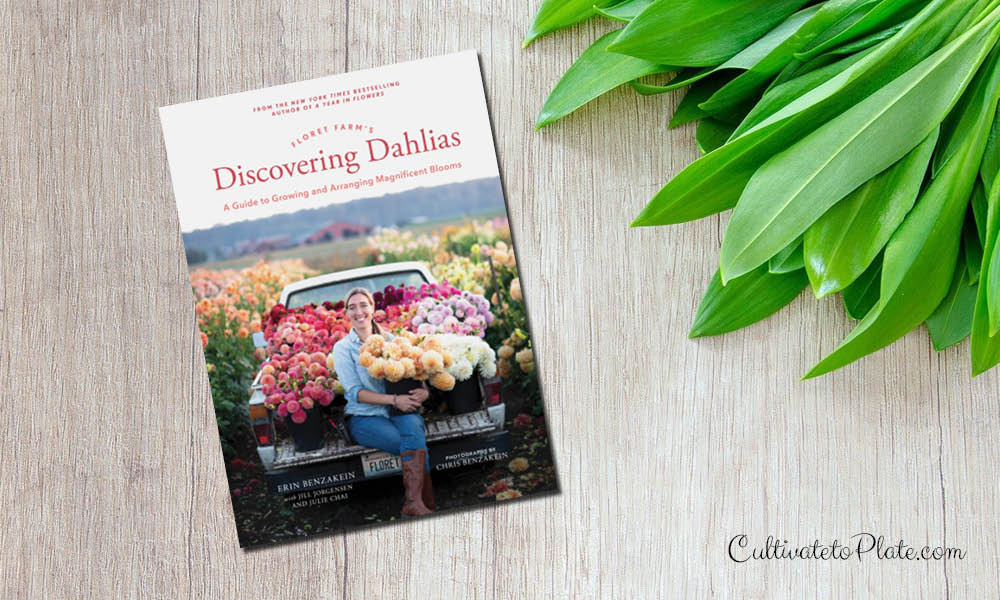Floret Farm’s Discovering Dahlias: A Guide to Growing and Arranging Magnificent Blooms by Erin Benzakein
A gorgeous book all about dahlia flowers.
Dahlias are a tuberous flower native to Mexico and Central America, and the dahlia flower is actually the national flower of Mexico since 1963. If you are looking for a good book that specifically details this special flower, then Floret Farm’s Discovering Dahlias is a great read.
Discovering Dahlias was written by Erin Benzakein with Jill Jorgensen and Julie Chai, and the gorgeous photography was shot by Chris Benzakein. Floret Farm is a “family-run flower farm and seed company, specializing in unique, uncommon, and heirloom flowers” (from their website floretflowers.com). And if I ever make to Skagit Valley in Washington, then I’m signing up for a single in-person class if there is one available, although online workshops for those interested in flower production as a business are currently available now.
Discovering Dahlias is all dahlia, and chapters include: Falling for Dahlias; Understanding Dahlias; Growing and Care; Digging, Dividing, and Storing; Advanced Techniques (propagation and hybridizing is covered here); Designing with Dahlias; and Variety Finder (360 different varieties are included in the book’s directory, and they are divided into 11 color class categories).
Dahlia Flower Varieties
What I found so interesting is that the dahlia flower is so very – varied. There are 8 different sizes to really choose from when choosing a dahlia:
- Pompon (up to 2 inches, also known as “P”)
- Mini Ball (2 to 3 1/2 inches, also known as “MB”)
- Miniature (up to 4 inches, also known as “M”)
- Ball (gorgeous ball shape, up to 3 1/2 inches, also known as “BA”)
- Small (4 to 6 inches, also known as “BB”)
- Medium (6 to 8 inches, also known as “B”)
- Large (8 to 10 inches, also known as “A”)
- Giant (10 or more inches, also known as “AA”)
With the size varieties, there are also 20 different form classes, from classically perfect balls and pompons to the more decorative forms of peony, orchind, orchette, cactus, waterlily, collarette, novelty, and anemone. Throw in the different colors, and you will never tire of learning about dahlias, and the only limitations in gardening will be where to plant them all.
I loved Floret Farm’s Discovering Dahlias. It introduced me to this lovely flower, of which I had only known a few species. I’m tempted to dig up some soil for these flowers especially when I know that dahlias can be grown as perennials in zones 8 or higher (I live in zone 9a).
Book Info:
- Amazon: Floret Farm’s Discovering Dahlias
- The Book Depository: Floret Farm’s Discovering Dahlias
- Chronicle, 2021.
- ISBN13: 978-1452181752
- Hardcover, 224 pages.
Disclosure: This book was provided by the publisher and any opinions are my own. Any affiliate links help to support this site. Thanks ?


You must be logged in to post a comment.